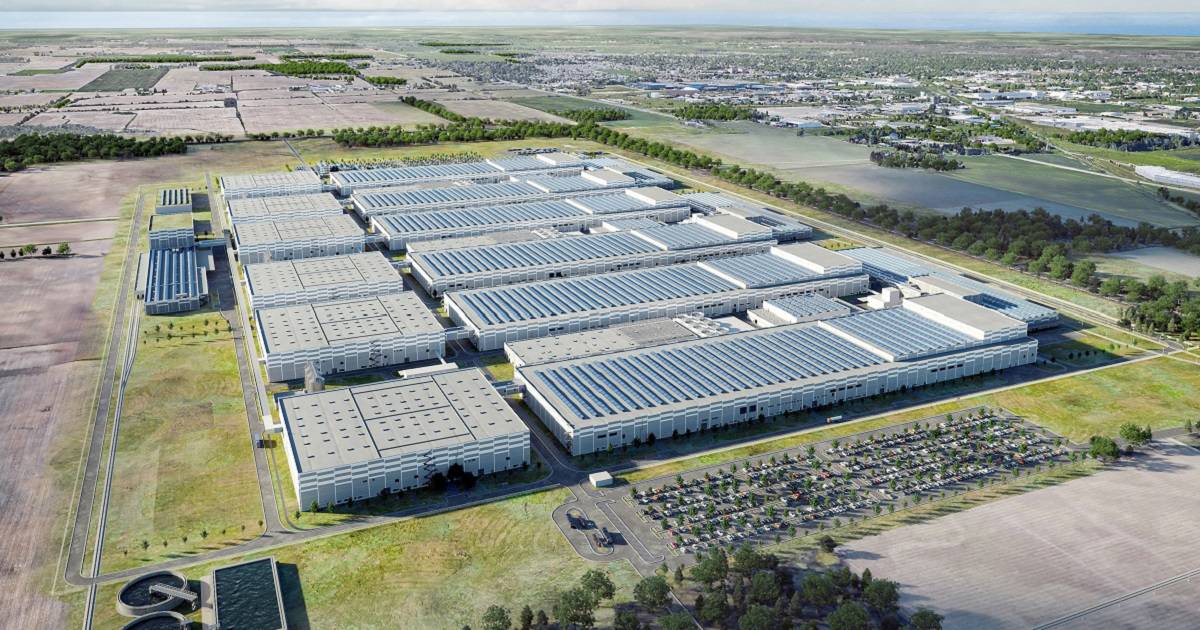The news keeps on coming about new investments in battery gigafactories in North America as companies realize that governments are willing to throw stupid amounts of money at them in the form of grants, subsidies, and loans to make this dream come true. The leader of the pack is the U.S. Inflation Reduction Act (IRA), which was signed into law last August and offers US$369 billion of subsidies for electric vehicles and other clean technologies. The Act also incents EV makers to produce more vehicles in North America and secure the key minerals for them outside of China.
Not to be outdone, Canada is trying hard to compete with the U.S. by spending ghastly sums of taxpayers’ money to bring some of that activity north of the border. Time will tell if this will be a prudent use of ‘our’ hard-earned dollars but in the meantime let’s take a look at the latest news on the battery plant front.
Volkswagen to build its largest gigafactory in Southern Ontario
Last Friday, the Government of Canada let the ‘cat out of the bag’ as to how much it was willing to provide to lure Volkswagen AG (XTRA:VOW3) to Southern Ontario to build its largest gigafactory to date in St. Thomas, with an annual production capacity of up to 90 GWh in the final expansion phase. The Federal Government has agreed to provide up to C$13 billion (US$9.7 billion) in subsidies and a C$700 million grant, which does not include any potential funds from the provincial government of Ontario.
When you realize that this plant is expected to cost about C$7 billion to build, you can see why it was a pretty easy choice for VW. I’m pretty sure I could sell management on a deal like this back in the day when I was trying to put together infrastructure projects. In the Government’s defense, the numbers roughly match what Volkswagen would have received from the United States through the IRA. With that said, I’m still not convinced we should try and match what a country with 10 times our GDP is doing.
GM and Samsung to invest over US$3 billion to build a new EV battery manufacturing plant
Not to be outdone, the United States had a couple of announcements of its own to temper Canada’s ‘win’. Yesterday General Motors Co. (NYSE: GM) and Samsung SDI (KRX: 006400) said they will invest over US$3 billion to build a joint venture EV battery manufacturing plant in the U.S. (The companies did not identify the location of the plant.) The plant, expected to start production in 2026, aims to have an annual production capacity of 30 GWh.
This marks GM’s fourth U.S. battery manufacturing facility having already done 3 joint ventures with LG Energy Solution (KRX: 373220) in the form of Ultium Cells LLC plants, including a US$2.6 billion plant in Michigan set to open in 2024. In December, the U.S. Energy Department finalized a US$2.5 billion low-cost loan to the Ultium joint venture to help finance the construction of the new manufacturing facilities which also include Ohio and Tennessee.
Hyundai and SK On to build battery plant in Georgia
Not surprisingly, with South Korean President Yoon Suk Yeol in Washington to meet President Joe Biden this week, confirmation of another EV battery manufacturing facility joint venture was made. Although an MOU was signed last December, Hyundai Motor Company (KRX: 005380 | OTC: HYMLF) and SK On, a battery unit of SK Innovation Co. Ltd. (KRX: 096770) ratified plans yesterday to set up a battery JV in the state of Georgia, in an investment worth approximately US$5 billion.
When fully operational, Hyundai expects an annual production capacity of 35 GWh with the facility expected to begin manufacturing battery cells in the second half of 2025. These two companies appear to be embracing Georgia as their home away from South Korea given Hyundai separately broke ground in October on a US$5.54 billion electric vehicle and battery plant in Georgia’s Bryan County, while SK Innovation opened a US$2.6 billion battery plant in Commerce, Georgia, in January that is producing batteries for the Ford F-150 EV.
Battery metals supply concerns
This begs the question of where are all the raw materials to build all these batteries going to come from. Perhaps all these subsidies to attract the manufacturing facilities will be for not as we see others getting in on the act. And not just any “others” but those who already control more than half of global lithium resources, and include by far and away the world’s largest copper producer.
That’s right, while in Toronto last month for the PDAC Convention, Argentina’s Mining Undersecretary Fernanda Avila suggested that Argentina, Chile, Bolivia, and Brazil are planning to coordinate action on turning more of the region’s mined lithium into battery chemicals, as well as moving into manufacturing of batteries and even EVs.
It makes a lot of sense (at least to me) that these resource-rich nations would like to move further along the value chain by leveraging their mineral wealth into expanded processing capacity and perhaps as far as vehicle manufacturing. Chinese carmaker Chery Automobile Co. has already stated it wants to build a US$400 million EV and battery plant in Argentina in an effort to tap into the lithium triangle.
Another lithium-producing area of Argentina is in talks with China’s Ganfeng Lithium Co. (SHE: 002460 | HK: 1772 | OTC: GNENF) and Gotion High-tech Co. to make battery cathodes.
Final thoughts
Will this be another case of China being a better visionary when it comes to the electric vehicle supply chain? As a taxpayer who is helping to subsidize Volkswagen’s efforts, I certainly hope that isn’t the case. But then again, our government doesn’t exactly have a great track record of being efficient and effective stewards of capital.




Leave a Reply